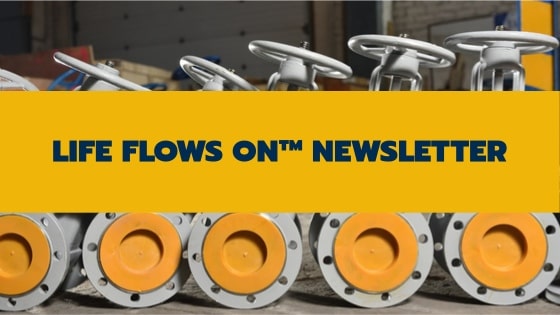The Valve Buyer’s Guide: Understanding Different Ball Valve Types

The modern ball valve has been in use for around 125 years.
There are four ball valve types that are in use all across the world. Ball valves are used in order to control the flow of liquid or gas, but which one is the right one for your task?
When it comes to ball valves using the right one for the job is what matters. If you use a ball valve that doesn’t allow enough flow or too much, you can damage and wear out valves. Selecting the right valve for the job is essential in keeping things flowing smoothly.
Ball Valve Types
Ball valves come in four different types. The difference between them is based upon the size of the valve and the ball within it. They each allow a different amount of flow through the valve and are useful for various tasks.
1. Full Port Ball Valve
In this ball valve type, the hole is oversized, allowing for an unrestricted flow. Since the hole and the pipeline are the same size, the valve is large but has very little friction. The size of this valve makes it useful only when a large valve is of no concern.
This is also a useful valve when you don’t need to change the size of a pipe. The unrestricted flow allows for ease of use.
2. Standard Port Ball Valve
With a small ball and small port, the standard port ball valve is often cheaper than other types of valves. This is a great option and doesn’t restrict flow too much. Flow is restricted somewhat, and therefore doesn’t fit all applications.
Standard port ball valves are commonplace and used in almost every industry that requires the use of ball valves. They are sometimes used as a one-size-fits-all valve. However, since there is a reduction in flow, it can be worn out by overuse.
3. Reduced Port Ball Valve
This is also the type that has reduced ball valves in order to shrink the flow as needed. This means that on one side of the valve the incoming pipe is reduced by a size on the outgoing side. This restricted flow is useful in many industrial applications.
4. V Port Ball Valve
If you need control in the flow rate, a V port ball valve is the one for you. The ball is shaped like a V, allowing for a small opening to be managed, or a full opening. This allows for better control than other types and is useful if you want to maintain a flow characteristic.
Other Types of Ball Valves
There are other common types of ball valves that have other features than just the basic 4 ball valve types. These include trunnion and welded ball valves. They are very popular because they are improvements over the basic structure of a ball valve that is done for various reasons.
Trunnion Ball Valve
A trunnion ball valve is a valve that has the ball mechanically anchored. This type of ball valve is useful in applications where a heavy flow or high pressure is expected. It allows the ball to still operate while being very sturdy and long-lasting.
Trunnion ball valves are especially popular in areas where the pressure is expected to exceed 600 psi. They are a fundamental part of operations where large amounts of flow are expected as well. You can count on their durability in order to continue operating for a long time.
It is also popular to use an actuator that is controlled by a motor or pressure. This can allow for fine control over the operation of the line and the flow of material. Whether you require a ball valve for a liquid, gas or slurry, the ability to control the flow is important in many industries.
Welded Ball Valves
A fully welded ball valve is great for high pressures. They combine the strongest possible valve with the lightest weight available. This allows them to be used in many places and under any circumstances other ball valves may not survive for long.
Fully welded ball valves are sturdy and strong and have a high resistance to internal and external pressure. This makes them the go-to choice for many applications. Welded ball valves are also tough. Due to the welding they do, they don’t wear out quickly.
Floating Ball Valves
A floating ball valve is one in which the ball floats in liquid. The valve can then be turned off with nothing more than a quarter turn. This allows the valve to control the flow of liquid and makes it very easy to operate. See this floating ball valve catalog for more information about them.
Soft seated vs. Metal seated ball valves
Soft Seated Ball Valves
Soft seats are generally made of thermoplastic materials like PTFE. They’re great for applications where chemical compatibility is important, and where the tightest seal is key.
However, soft seats are not recommended for process fluids that are dirty, or abrasive. Soft seats can break down in these conditions, causing the valve to leak.
Metal Seated Ball Valves
The primary advantage of metal seated valves over soft seated valves is their ability to withstand high temperatures and severe service conditions. Metal seats can endure severe flashing, hydraulic shock, abrasive process fluid, and high temperatures up to and exceeding 1,000° F. They are also ideal for high erosion or corrosion applications.
Metal seats can be hardened by coatings like ultrasonic spray coating, satellite hard facing, chromium carbide, and tungsten carbide.
Which Is Right For The Process?
The upfront purchase price of a metal seated ball valve is definitely more than a soft seated ball valve. However, one should consider the cost of downtime and the replacement of a soft seated valve. The total cost of ownership may favor the metal seat.
Understanding your process conditions is key to determining the right seat for your application. If the selection is still unclear, speak with an engineer who is well versed in valve selection to help determine the best solution.
The Purpose of a Ball Valve
Ball valves are great for having control over the flow of a pipeline whether or not it transports gas, liquid or slurry material. They are able to restrict, open, and facilitate the operation of any pipe while giving the option to reduce the size, increase the pressure or maintain it.
This versatility has made ball valves essential to the function of modern industry in many different fields. It is hard to imagine a world in which we didn’t discover ball valves over 100 years ago. If you need a ball valve but are unsure of what type, consider speaking to professionals like those at AnythingFlows.
The Right Valve for the Right Job
No matter what you are using your ball valve for, the important thing is that you get the type and kind that you need. No matter what you are wanting, we can help you. If you’re unsure of what ball valve types you need, please contact us.
Flow control is our passion, and the last thing you want is to get the wrong type of valve. That can lead to a host of operational issues and safety concerns which can cause serious injury or death. Get the valve you need and browse our catalog of options and parts until you find what you are looking for.

